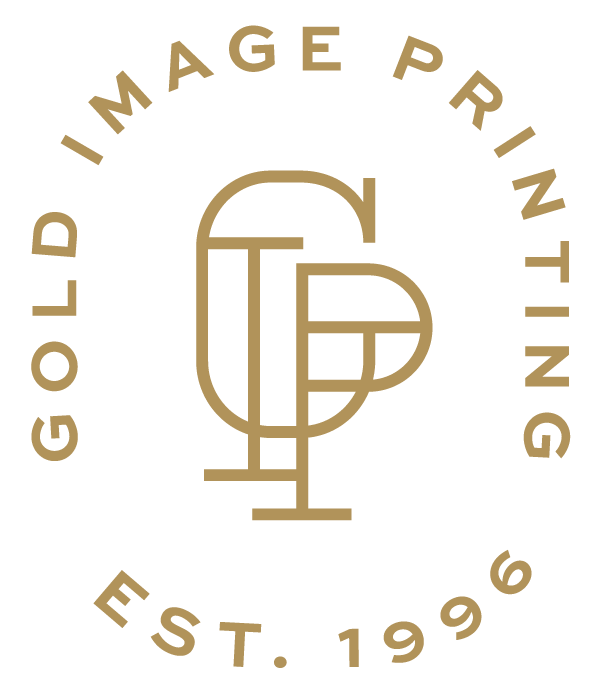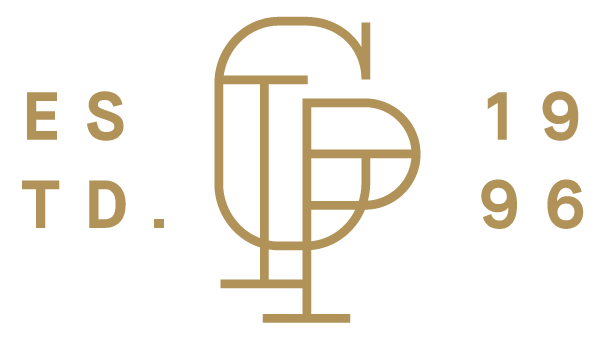Once you enter the marketing space, a lot of terms get thrown around that you may be familiar with but that may have never been properly explained to you. We see this happen a lot with CMYK vs Pantone – they both have to do with color, but what do those magic words really mean? Gold Image Printing is here to help explain where the terms come from, the difference between CMYK and Pantone, and how you can make an informed choice on which color process to use for your next full-color printing project.
What is CMYK?
CMYK is an acronym that stands for cyan, magenta, yellow, and key. These refer to the four main ink colors used by most digital printers, including the commercial printers we use at Gold Image Printing. You might be thinking, wait a minute, “key” isn’t the name of a color. The term key is used to refer to the base or main color used to determine the image outcome. For the majority of print jobs, that color will be black, as most text and images feature black as the dominant color.
These four colors were selected as the standard in the printing industry because blending them together produces an almost unlimited number of rich, deep color tones. CMYK is often referred to as the “four-color process.” To get a bit technical, when a design is submitted for printing, it gets broken down into the four process colors, and “halftones,” or small evenly spaced dots, of each color are printed in an overlapping arrangement, at various angles, to produce the final image that is printed on the page. If you were to zoom in for a close-up view of a printed image, you’d see that even large swaths of a single color are in fact made up of tons of these printed tiny dots. So what does this mean for your printing project? If you’re wondering when to use CMYK colors, we’ll get to that, so keep reading.
What is Pantone?
Pantone, otherwise known as PMS (Pantone Matching System), is a trademarked color identification system developed by Pantone Inc. All PMS colors are paired with a color code that makes it easy for manufacturers and designers around the world to create a perfect color match for a product even without seeing it. For example, Viva Magenta 18-1750 was named the official Pantone shade of 2023, so if you chose that as one of your wedding colors, you could request a spot Pantone match for 18-1750 when you submit a custom quote for your Wedding Invitations. The term “spot color” refers to one specific color within your design, since the precision involved with matching a single color adds significantly more time and effort for a professional printing team and, with it, a higher price tag. So if you’re requesting a Pantone color match on your next print job with Gold Image Printing, you’ll want to be strategic about the color(s) you choose.
What about RGB?
In the conversation covering CMYK to Pantone, you may have also heard the term RGB. This stands for red, green, and blue, the three primary colors used for digital color design. While this color scheme is not used for print production, it can be helpful to have a basic understanding of it, since print projects are submitted digitally, meaning their design begins in RGB and must be converted to either a CMYK or Pantone color mode prior to printing. Luckily, our professional team here at Gold Image Printing takes care of this entire process for you, so you don’t need to wade into all the specifics and get lost in printing jargon. You can rest assured that your final design will show up with the same colors you imagined, whether vivid and bold or delicate and pastel. For those who may be curious about the process, feel free to check out our Artwork Guidelines.
What should I pick for my project?
Now that you know the difference between CMYK and Pantone, it’s time to decide which color process you want for your next project. Some things to think about here are whether you have a very specific color that you want to match flawlessly, like a logo or other visual that is significant to your branding.
Choosing Pantone
Using Pantone matching for a single-colored logo is the perfect choice, since it ensures that your chosen color stays uniform across your printed collateral, and you can keep costs down by sticking with just one color. If you’re still deciding on the color of your logo, we touch on color symbolism in our blog post, Logo Design Tips & Tricks. Another great application for Pantone is product packaging, like Custom Product Boxes, although we also offer a number of professional printing products that have color matching at the forefront, like Pantone Business Cards and Pantone Letterheads.
Choosing CMYK
As far as CMYK, this color process produces outstanding results, but they aren’t always as precise as Pantone. Use CMYK when your design incorporates lots of colors and photographs, as in Lookbooks or Catalogs (check out our blog post, Lookbooks vs. Catalogs vs. Booklets, while you’re at it). It’s also a great option for when you aren’t as concerned about the variation in color, and for large-quantity print jobs, like Postcards and Flyers.
Trouble Choosing
There may be times when you aren’t sure whether to go with a Pantone solid vs CMYK, like when you have to print a batch of Corporate Event Invitations: Pantone would be ideal for your logo, but lots of text and design elements could drive up the price. The great news is that, when you print with Gold Image Printing, you are in the driver’s seat and can make the final decision based on your preferences and priorities. If you’re ever in any doubt, get in touch with our team of professional designers for a custom quote, and they’ll walk you through the process of determining whether Pantone or CMYK is right for your print job. So have some fun with color and partner up with Gold Image Printing, the leading online printing service!


